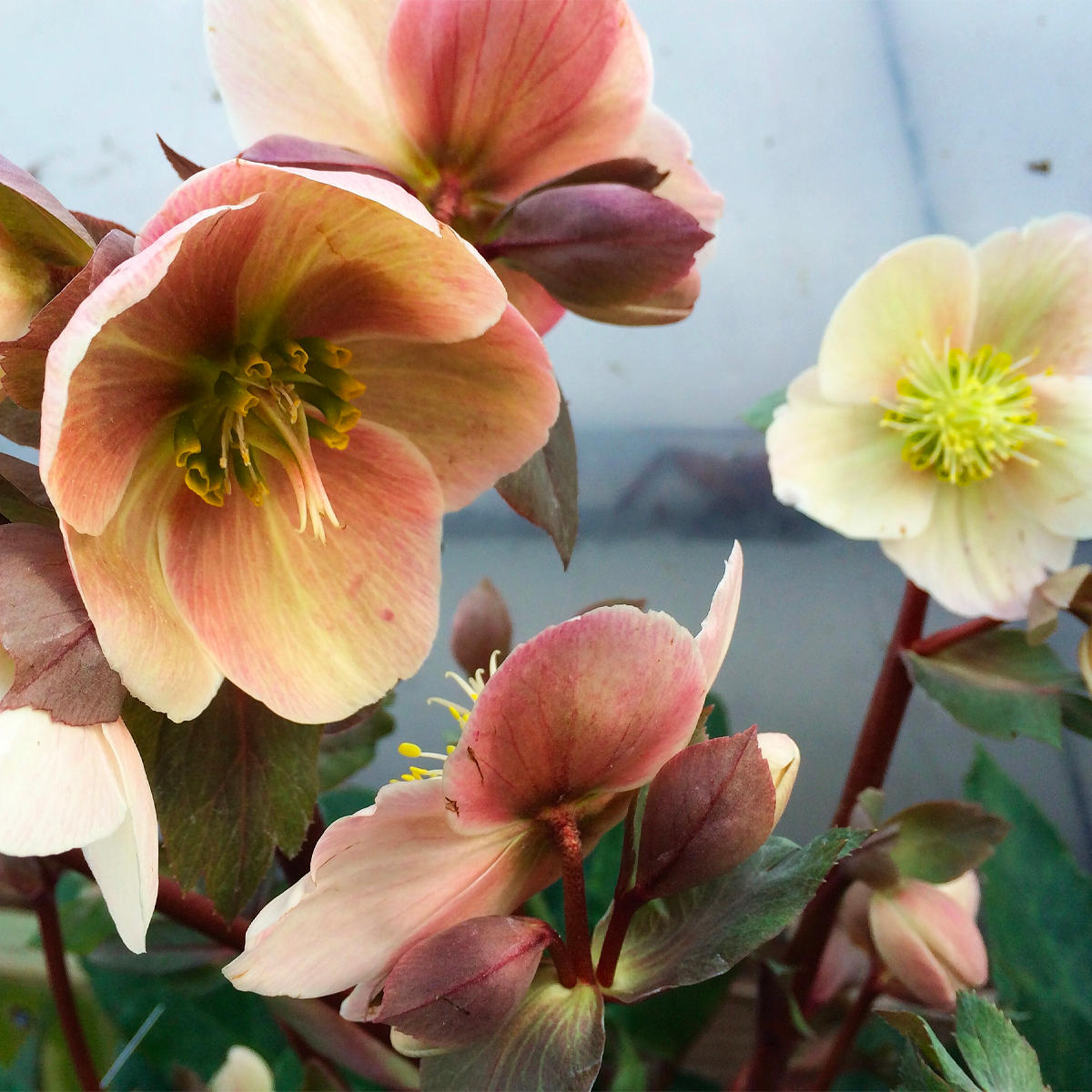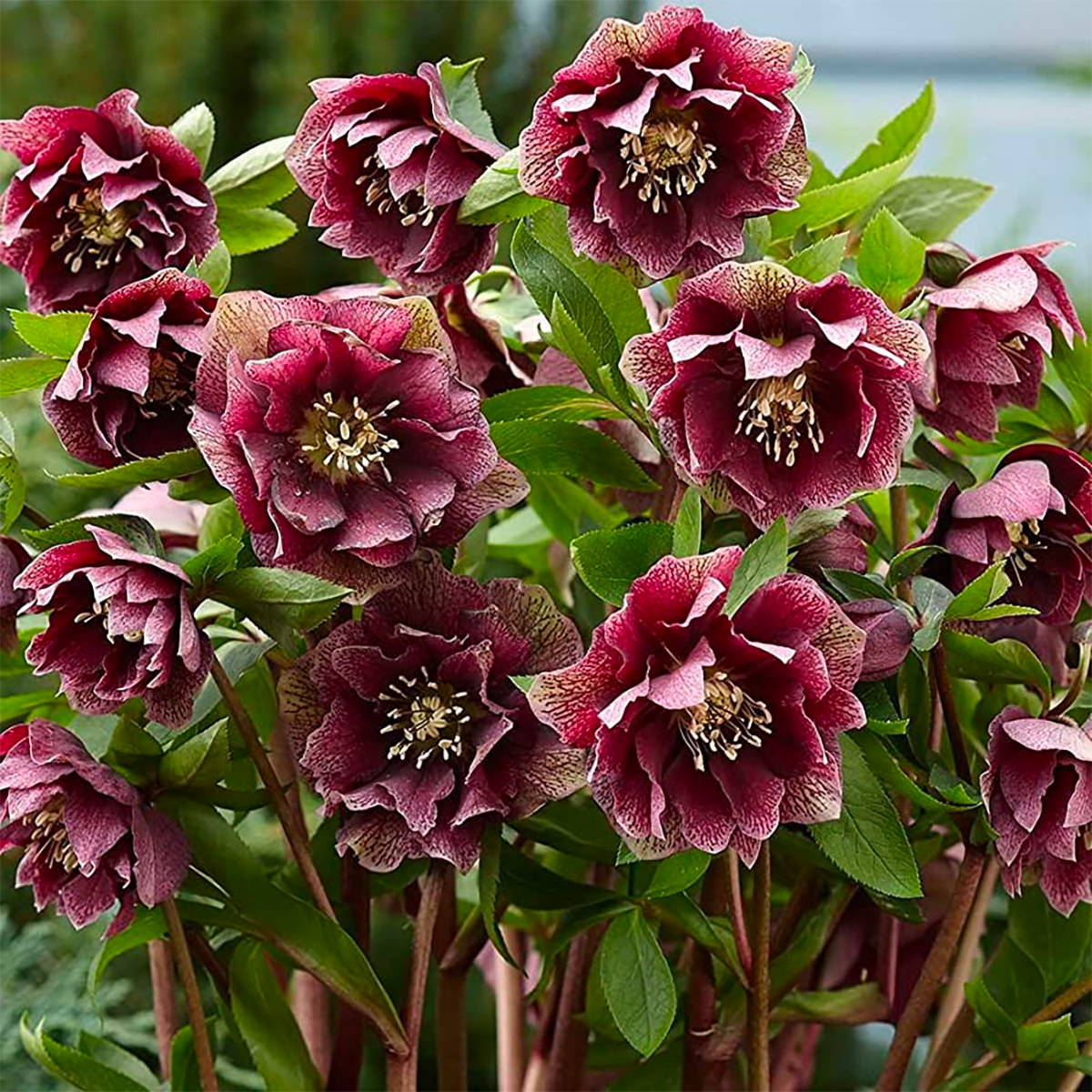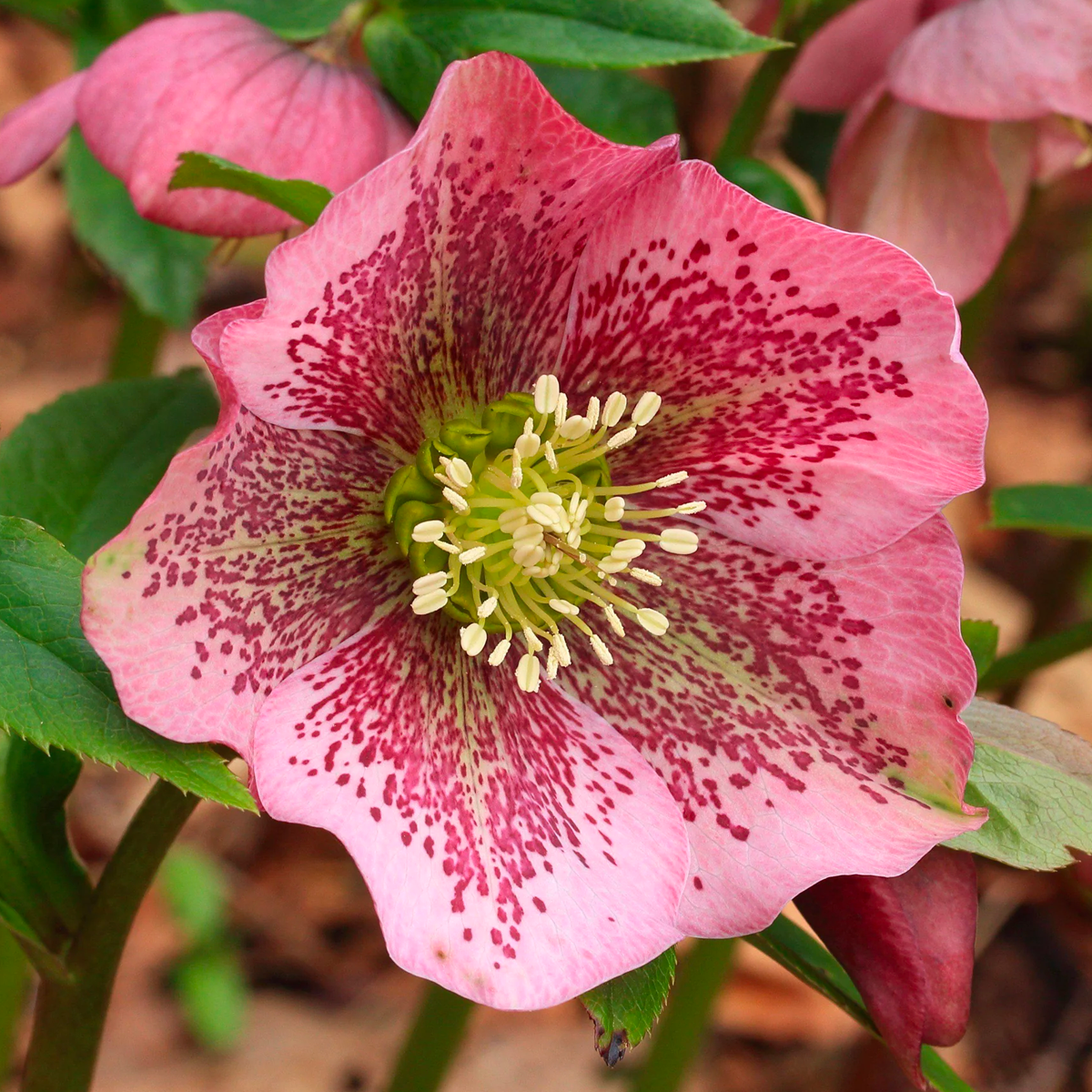It’s not a rose; it’s a perennial hybrid hellebore belonging to the buttercup family. It is bred from crossing Helleborus orientalis with other closely related species. The two-part common name of Lenten rose refers to the plant’s bloom season, which is around the Christian season of Lent that falls in late winter, and its rose-like flower buds.
Lenten rose is valued for its early-season blooms of traditional colors white to pink to light rose-purple and its leathery evergreen foliage. Many cultivars come in a wide variety of other colors such as dark purple, maroon, cream, and yellow. The blooms on some of the older heirloom varieties are downward facing, but the newer hybrids have upward- and outward-facing blooms.
The blooms—which are actually sepals similar to petals but longer-lasting—are usually two to three inches in diameter appearing on thick stems that rise above the foliage. The flowers can have variations in markings, such as margins of a different color, showy freckling, or veining. The flowers can be smooth or ruffled, depending on the cultivar.
Flowering initially occurs near ground level, below last year’s leaves. It’s a slow grower from seeds; it can take two to three years to mature into a flowering plant. Hellebores can be planted in early fall or late spring and have a long eight- to ten-week bloom period.
Lenten Rose Care: Lenten rose is one of the easiest plants to grow. Keeping the soil moist and mulching in early winter will encourage the plants to thrive, but they can tolerate drier conditions once established. Plant them in early fall or late spring in a partial to full shade location and keep them sheltered from harsh winter winds.
This plant’s shade tolerance makes it perfect for woodland gardens. Flower color becomes less vibrant as summer approaches and entirely fades by fall, but you can look forward to the persistence of the Lenten rose’s sepals for about six months.
Light: One of the best perennials for shade, hellebores will retain their vibrant sepals and foliage in shady locations. An ideal location for Lenten rose is under the canopy of a deciduous tree, which provides shade in the summer but allows plants to receive sunlight in winter when the trees drop their leaves. They do best when they receive some sun in winter but full to partial shade in summer.
Soil: This early spring bloomer prefers evenly moist, well-draining, fertile soil. Enrich the soil with compost to improve the vigor of the plants or fertilize them with manure tea.
Water: Hellebores prefer evenly moist but not constantly wet soil; soggy soil can invite disease. Provide enough water to keep the soil moist during prolonged periods of hot and dry weather but once established, Lenten rose can tolerate dry conditions. You can expect that new plants will need about an inch of water per week if no rain is in the forecast.
Temperature and Humidity: Although its foliage is evergreen, the foliage can become scorched and tattered in extremely harsh winters. The plants will need winter protection to keep them safe during deep freezes. Lenten rose requires shade if you live in a zone with intensely hot, sunny summers. It likes constant moisture and grows well in humid climes.
Fertilizer
Regularly amending your soil with organic matter is enough for a single specimen hellebore, but for larger plants or a cluster of multiple plants, lightly fertilize with a slow-release, balanced fertilizer in late winter as new foliage is beginning to emerge. If using liquid fertilizer, make sure it doesn’t splash on the foliage because it can burn the leaves. If you accidentally splash some on the plant, use a steady stream of water to wash it off.
Pruning: Remove old, scorched, damaged, or dead leaves from the plant before the plant is in bloom (usually late winter to early spring). After blooming has finished, cut back flowering stems to their base to encourage new foliage growth.
Allow the healthy evergreen foliage to remain on the plant throughout winter. During the growing season, remove any browned and ragged foliage at its base. When the flowers have started to brown at their tips, cut them back to the bottom of the plant; the time of year depends on your zone and the growing season conditions.




